Croatia Becomes a Destination for Vegan Sailing Vacations
May 13, 2021 - This season, the Croatian coast has something to offer - vegan sailing vacations. Alvus Sailing has launched a new sailing tour with vegan dishes on board!
Although there are a handful of restaurants and shops with vegan options in big cities, on the Dalmatian Coast, Croatia has not been considered a travel destination for vegan vacations. That is, until now!
Matea and Marina from Alvus Sailing created a Vegan Sailing Vacation - a 7-day sailing tour from Split with vegan cuisine on board.
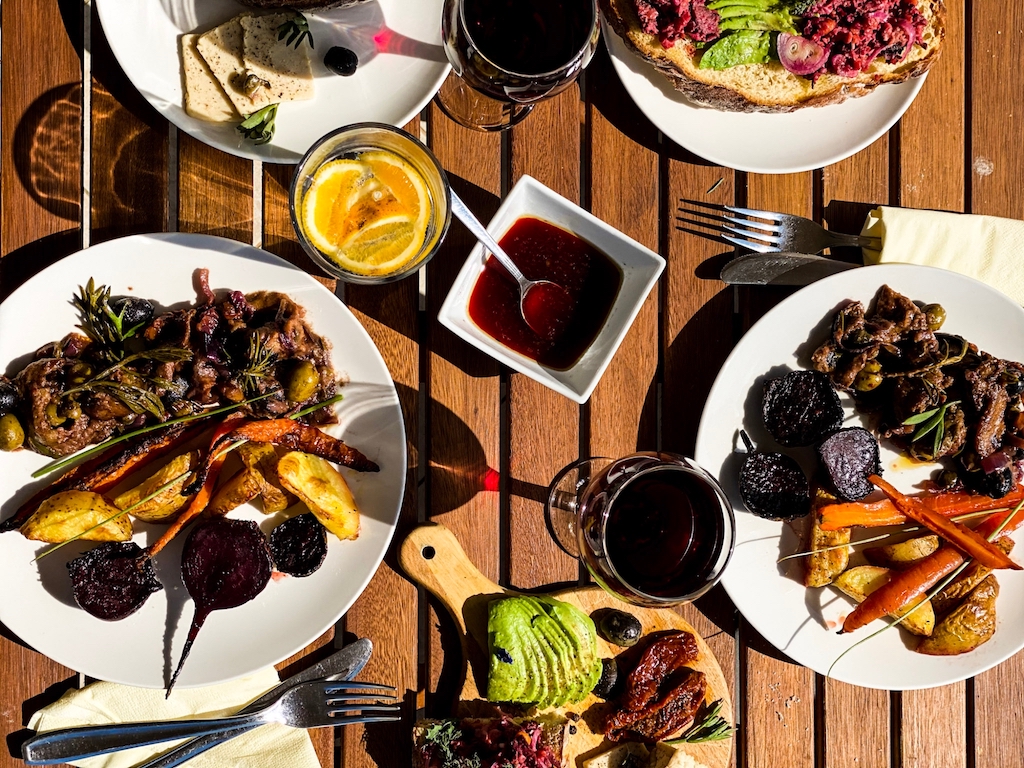
"The combination came as a natural consequence of our passions," Matea explains. She finished a sailing major in Zagreb and worked as a skipper in the summer, while Marina practiced plant-based cuisine. Partners at work and in life, they proposed the idea to their friend from a travel agency and the new tour was born.
It keeps up with trends in the sphere of caring about the meals of the guests during longer sailing trips. Here in Split, we already have companies that are trying to offer clients more than prosciutto & cheese - that actually doesn't fit for vegans. Enthusiastic sailors cook a dinner for the guests by themselves. "Since it is very cozy to have someone cook for you on the boat, I thought that could be a very good offer for tourists in general," Matea adds.

Besides, vegan cuisine for the tour is already thought out and tested many times by Marina. She is inspired mainly by Mediterranean cuisine which originally contains a lot of vegan dishes but also mixes it with Asian tastes. She uses different combinations and cooking methods to get different tastes and provides the guest on board 3 vegan meals with snacks per day. It seems especially valuable for regular vegans who, aside from top vegan vacation places, mostly in the US and Canada, still have this fear of eating only peanut butter and jelly on the whole trip. Split's offer of food witnessed positive changes over the last decade. Comparing blogs of vegans traveling in Croatia, we can see them reporting about 1 place per day for vegan meals in the city 12 years ago and, respectively, about 2-3 vegan places per day in 2020. However, even now it's recommended to have your vegan snacks with you while traveling, because it's not easy to find everywhere in Croatia.

Vegan Sailing Vacations welcome not only a vegan audience. For non-vegan people, this tour could be even more of an astonishing surprise, its creators suggest. Marina is willing to show the process of cooking vegan food and share recipes with anybody interested. As well, the guests will be able to participate in collecting edible wild plants on islands and implementing them in meals.
Meals on Marina's table look very delicious. But as a non-vegan person, I always wonder whether you will be strong enough for sailing stuff if you eat only plant-based dishes. The adventurous girls prove by their own experience that it's possible to strong as a vegan. Matea is working also as a fitness trainer.
"I can just say, I had a boxing session on Palagruža".
For more on travel in Croatia, follow TCN's dedicated page.
Lošinj Gastro Weekend 2021: Local Culinary Spectacle Throughout May
April 28, 2021 - Starting this weekend, the Lošinj Gastro Weekend 2021 prepares a real treat to the visitors of 14 restaurants on the island.
A beautiful island setting of Lošinj, and delicious food next to the Adriatic - all a regular feature of the annual gastro weekend which starts this week and continues until the end of May.
As Losinj Tourist Board website VisitLosinj.hr announces, fourteen restaurants from Osor all the way to Mali Lošinj will each weekend have a special offer based on a specific product.
Starting with this Friday, April 30 to Sunday, May 2, the restaurants will have lamb specialties in which the local meat will be offered to satisfy your taste buds.
The next is asparagus weekend (May 7-9), followed by fish dishes (May 14-16), Medditaranian herbs dishes (May 21-23), and finally the Antic cuisine (May 28-30).
Artatore, Baracuda, Bocca Vera, Bora bar, Borik Mediterranean Bar, Deveron, Diana Steakhouse, Eki, Lanterna Grill Mare, Silvana, Silver Bay Televrin, and Veli žal are the restaurants.
Turizmoteka.hr also covered the story and warned readers to reserve their place in the restaurants to enjoy this lovely culinary spectacle.
„In these moments, the cooperation between every actor in the destination is extremely important to overcome the negative effect of corona crisis as fast as possible. This festival is an ideal opportunity for visitors to meet Lošinj through local specialties. Come and enjoy!“, said Mali Lošinj mayor Ana Kučić, writes Turizmoteka.
"It is our wish to bring our guests almost all gastronomy pleasures the Island of Vitality is known for“, said Dalibor Cvitković, president of Lošinj Tourist Board, referring to the island's nickname.
Learn more about Croatian islands on our TC page.
For more about travel in Croatia, follow TCN's dedicated page.
Touch of Baranja Photo Exhibition in Zagreb Until End of April
April 21, 2021 - A Touch of Baranja showcases 20 photos of the Baranja region to promote this rich natural and cultural site to both domestic and foreign visitors.
If you want to experience a touch of Baranja, but you're stuck in Zagreb, the city's Flower square (Cvjetni trg) offers you a compromise.
Dodir baRAnJe (A Touch of Baranja), an outdoor photo exhibition that will remain open until the end of April, highlights 20 photos of beautiful Baranja.
''A picture says a thousand words, so this is how we decided to present the beauty of Baranja and motivate Zagreb's citizens and their guests to visit the region located between the Danube and Drava rivers next to the border with Hungary to have a proper break,'' says the website of the Baranja Tourist Board.
The Tourist Board, along with Tourist Boards of Draž and Bilje-Kopački Rit hosted the event.
Nenad Milić, Dubravko Franjin, Romulić&Stojčić Studio, Mario Đurkić, and Zvonimir Janković are the photographers whose work is being featured in the exhibition. Below every photo, there is a QR code that offers an explanation of the photo both in English and Croatian, and in the evening, the photos are illuminated by solar power collected during the day.
As written by the Explore Croatia site, Baranja is special for its display of multiculturalism of the people who live there and who have previously passed through the territory. Tradition and cultural heritage in the area have survived the challenges of time, and nowhere is that more visible than in Baranja's cuisine.
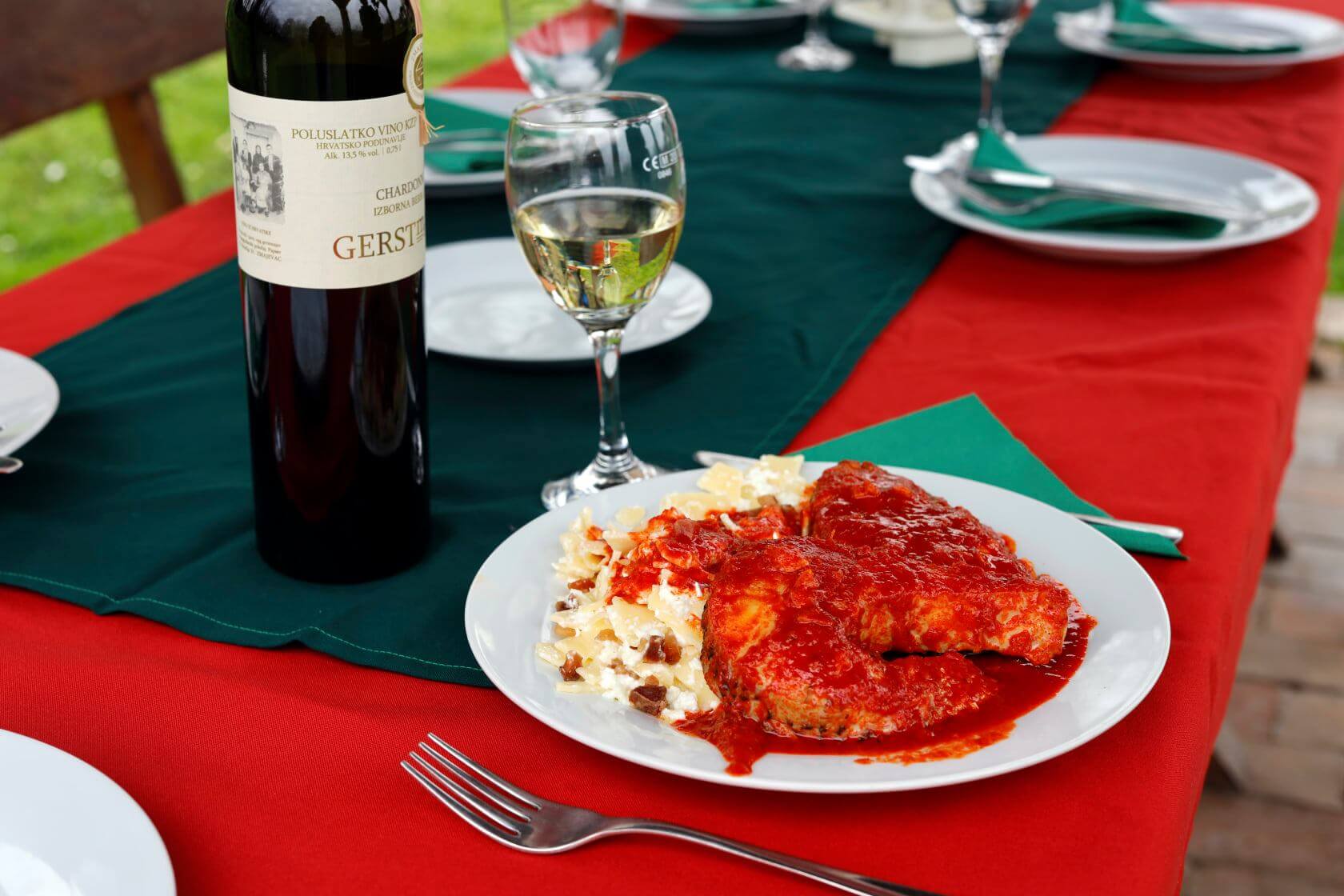
© Visit Baranja
''Baranja continues to remain a special destination which will tell the traveller various stories about tradition, family, life secrets, love, death, wines, hot peppers, specific fishing, weddings…“, explains the Explore Croatia site.
Baranja also offers the richness of nature as it is surrounded by rivers and the Kopački Rit swamp and bird reserve that is home to a wide and impressive variety of animals and plants, representing a real treat for the dedicated traveller.
When in Baranja, make sure to try the delicious Fiš Paprikaš, Baranja's own local Kulen recipe, and carp prepared in a delicious way only Baranja knows how to do.
Learn more about Croatia's food on our TC page.
For more about travel in Croatia, follow TCN's dedicated page.
Croatian Parliament (Sabor): About 75 kg of Food thrown Out in Croatia Annually Per Head
ZAGREB, 4 March, 2021 - About 75 kilograms of food is thrown out each year in Croatia per head, lawmakers underlined on Thursday during a debate on an agriculture bill which among other things regulates the prevention of waste food.
"Food waste has reached a value of 20% of the total amount of food produced in Europe and on the global level losses amount to one-third of all the food produced, while in Croatia we throw out 75 kilograms of food each year per head," said MP Marijana Petir of the Croatian Democratic Union (HDZ) caucus.
The agriculture bill, she said, would be the basis for documents that will regulate more clearly activities regarding food donations and preventing food waste, but also a system of quality food production.
The EU foresees reducing food waste by 50% by 2030 and we too have to achieve that aim, Petir underscored. "Any reduction of throwing out food means less pressure on farmland and reduced consumption of water, pesticides, and fertiliser."
MP Marija Selak Raspudić (Bridge) said that a quality system of food donations is important given the increasing poverty, but added that the bill does not provide a clear plan and that the most important thing would be to establish a food bank.
Anka Mrak Taritaš (GLAS) too underlined the need for a food bank so that surplus food can be distributed at the national level.
State Secretary in the Agriculture Ministry Tugomir Majdak said that the amount of donated food in 2019 had increased by 30% compared to 2018 and amounted to 1.5 million tonnes.
With regard to reducing food waste, Majdak explained that a guide has been prepared for food donations, a feasibility study for a food bank has been prepared, and tax reliefs on food donations have been defined.
The amendments to the law will align it with EU regulations regarding the prevention of food waste.
Price Most Important Factor for Croatian Consumers When Choosing Food
ZAGREB, 17 January, 2021 - The basic criterion for Croatian consumers when choosing food is price, followed by safety, while origin is in the 6th place, the Smarter consulting company said on Tuesday in a statement on the survey of European consumers' attitudes published in December 2020 by the European Commission.
The survey has shown that for 54% of Croatian respondents price was the most important criterion when choosing food, and Croatia is one of 17 European countries whose consumers consider this factor one of the three most important.
The origin of food ranked sixth among the ten criteria for choosing food as every third respondent in Croatia (32%) opted for it.
Croatian food processing companies must realise that regardless of food quality, it has to be produced at competitive prices, at least as long as price is the primary factor for the Croatian consumer when choosing food, Smarter said in an analysis of the survey results.
Food safety another important criterion for Croatian consumers
Food safety is the second most important criterion for Croatian consumers (50%), which shows consumers' awareness of the importance of that component but can also be a consequence of frequent cases of food not meeting safety standards on the Croatian market, Smarter said.
Food taste was ranked third by Croatian consumers, with only 37% of respondents using that criterion as the main one when choosing food, and it is followed by the expiry date (35%).
This criterion, Smarter said, also places Croatia among four European countries with the highest percentage of consumers considering it one of the most important criteria. These are mostly countries that joined the EU later (Bulgaria, Latvia, Lithuania, Romania), and more than a third of respondents in those countries underscored the importance of that criterion when choosing food.
The nutritional composition of food is the fifth most important criterion for Croatian consumers when choosing food (34%), and according to Smarter, that piece of information could be important to domestic food producers.
Despite the prevalent opinion that the origin of food is important to domestic consumers, according to the survey, it is the 6th criterion out of ten when buying food in Croatia, Smarter said.
They think that such a result (32%) can be disappointing, especially when compared to Slovenia or Denmark, where choosing a domestic product is the most important criterion for 57% and 43% of consumers respectively.
The survey of European consumers' attitudes was conducted in August and September 2020 with the aim of determining consumers' attitudes towards and expectations of long-term sustainability of food production in the EU.
In Croatia, the survey was conducted on a sample of 1,019 respondents, using the "face to face" interview method.
Asked about the main elements affecting their decision to buy food, European consumers cited food taste as their first criterion, food safety was ranked second and the cost of food (price) was ranked above the sustainability of its production.
Croatia's Food 2nd Most Expensive in EU by Wage: Health Implications?
January 13, 2021 – Only in Romania are they so poor that they spend more of their income on food than here. In a country famous for its premium produce, what is the price on the health when Croatia's food is so incredibly expensive?
Croatia's food is the second most expensive in Europe when judged next to average household income. Only in Romania do people spend a larger percentage of their monthly wage on food and non-alcoholic drinks. In the EU, the average household spends on food takes up 7% of their earnings. In Croatia, it is almost double that amount – 13%. That the average monthly wage in Croatia is a third lower than the EU average accounts for some of this disparity. Though the other reason is simply that Croatia's food is really, really expensive.
“I couldn't believe it when I saw the prices of food after I got to England,” Split-based nutritionist Iva Tokić tells TCN. Having studied for her Bachelor's degree in nutrition at the University in Split, she transferred to Oxford Brookes University in England where she earned her Master's degree in the subject. “I expected food to be much more expensive, because life, in general, is so much more expensive in the UK than it is here. I was pleasantly surprised to see that the prices of the UK's food are almost exactly the same as Croatia's food, except that in England some things like avocado, salmon (losos) and smoked salmon is so much cheaper than it is in Croatia. Insane!” Iva Tokić, who has her own independent practice as a nutritionist and works as a nutritional educator and consultant for other polyclinics and sports professionals back in her hometown of Split. She has a Master's degree in nutrition
Iva Tokić, who has her own independent practice as a nutritionist and works as a nutritional educator and consultant for other polyclinics and sports professionals back in her hometown of Split. She has a Master's degree in nutrition
Food shopping in the UK is a very different experience to that in Croatia. You would struggle to understand fully just how different it is unless you'd actually done both. There simply isn't enough farmland in the UK to feed all of its inhabitants. Most food is imported. Where in Croatia, you can still experience the authentic experience of eating a varied diet based on the seasons, in the UK that simply doesn't exist. Everything is in season somewhere in the world. And that's where they'll take it from. Everything is available. All of the time.
What the UK loses in this set-up - seasonal eating and the varied diet this creates – it makes up for with the offer available and price. Food and flavours from all over the world can be bought in any of the competing supermarkets. International cuisine is incredibly popular. And, just as the supermarkets compete to lower prices, so do producers – it isn't only salmon and avocado that is cheaper in the UK.
The lamb produced in the lush, green hills of Wales or on the moors of northern England and southern Scotland is comparable in extremely high quality to the very best you could buy from Pag or anywhere else in Croatia. Except in the UK, the animals' diets are unrestricted – the lambs grow much bigger. Though much of this premium product is exported (British lamb is a highly prized delicacy across much of western Europe, particularly France), a lot of it is still sold in the UK. Its price is kept down by huge amounts of imported New Zealand lamb which competes against the domestic lamb in price. In Croatia, lamb is an expensive treat – in the UK, it's an everyday meat. And it is much cheaper than it is in Croatia.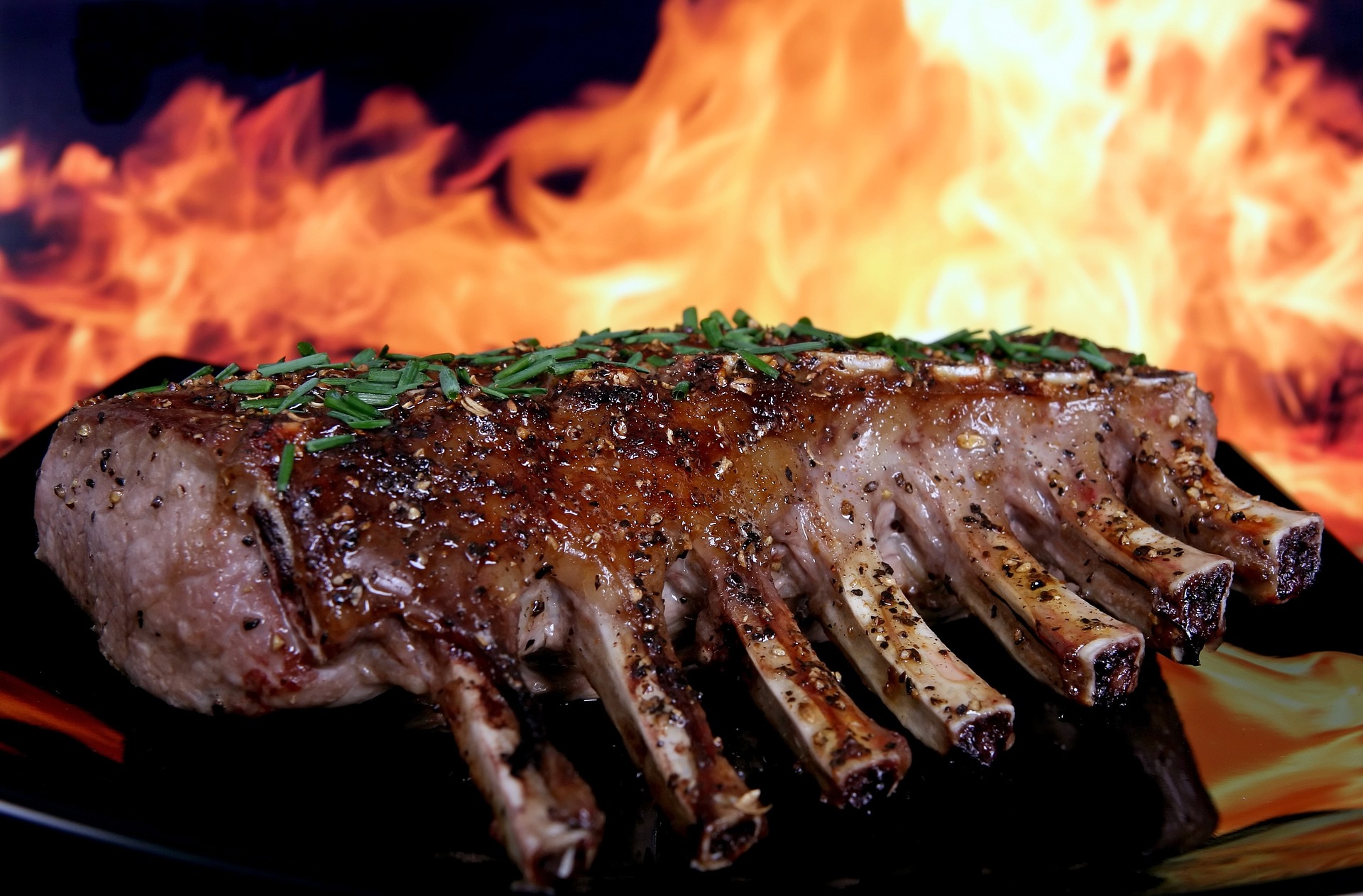 Although the lamb meat produced in the UK is of comparable quality to that produced in Croatia, the meats form a very different part of the diet in the two countries. In Croatia, lamb is an expensive treat. In the UK, lamb is much cheaper and viewed as an everyday meal
Although the lamb meat produced in the UK is of comparable quality to that produced in Croatia, the meats form a very different part of the diet in the two countries. In Croatia, lamb is an expensive treat. In the UK, lamb is much cheaper and viewed as an everyday meal
Within this one example we can sharply see the disparity between the premium food produced in Croatia and the general diet of the everyday citizen. Croatia is now known well for its cuisine and produce. TCN was pleased to report over recent weeks the success of food and agricultural exports from Croatia. However, the finest prsut, olive oil, seabass (brancin), bream (orada) and red wine for which Croatia is famous do not make up standard everyday Croatian meal. These luxuries are often exported. Pasteta (meat paste) on bread and cheap wine made palatable with cola are more likely to be the elements of Croatia's food found in any student kitchen in the country.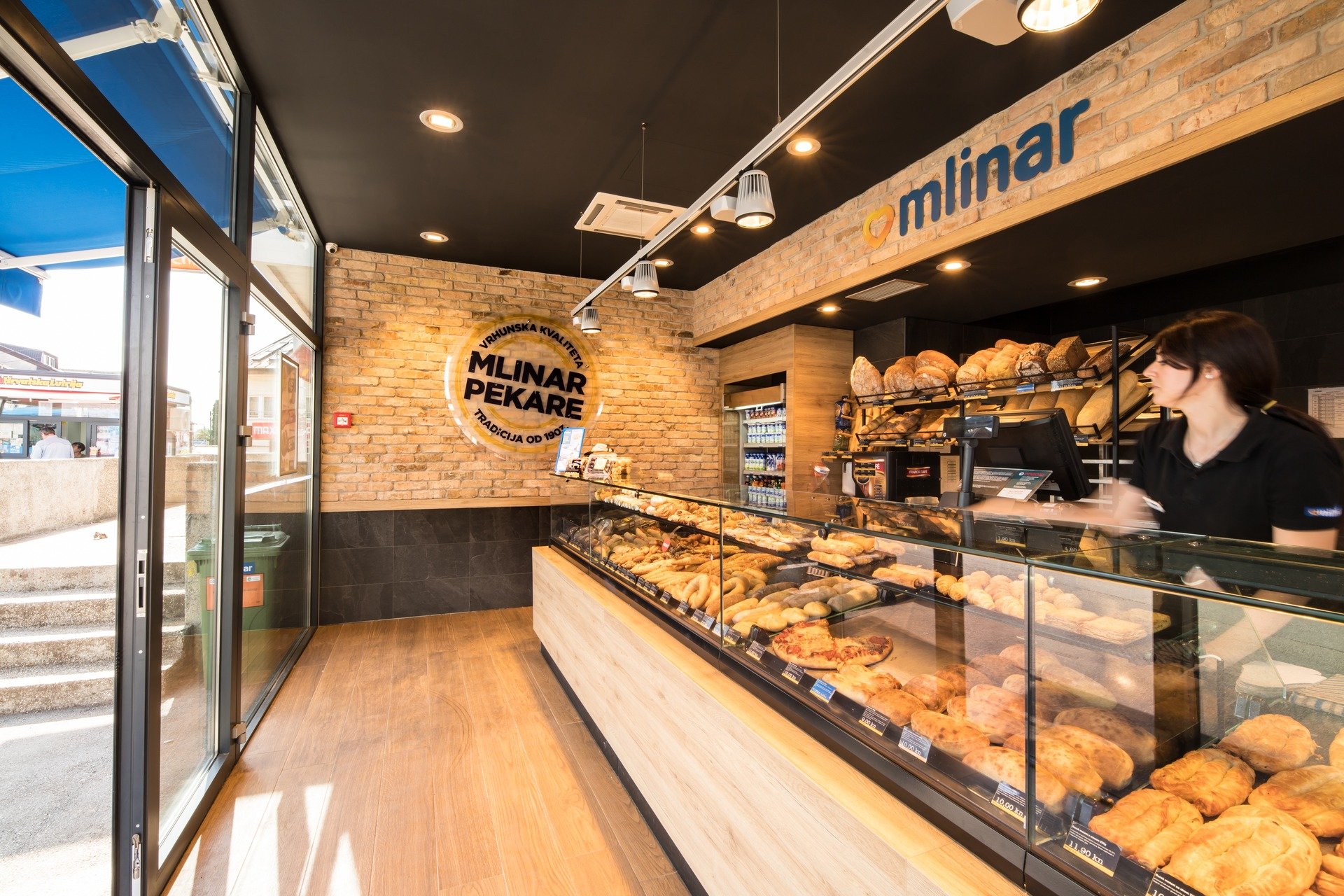 The pekara (bakery) is a fast, inexpensive and very popular choice for both breakfast and lunch in Croatia, but is it the healthiest thing to eat every day? © Mlinar
The pekara (bakery) is a fast, inexpensive and very popular choice for both breakfast and lunch in Croatia, but is it the healthiest thing to eat every day? © Mlinar
“We really don't eat enough fish. It's so disappointing because we live right next to the sea!” says Iva, who now works in her own independent practice, and as a nutritional educator and consultant back in her hometown of Split. “But, we don't eat enough of it because it's way too expensive for a lot of us to eat regularly. We also don't eat enough vegetables and fruit. We eat meat. We eat a lot of meat. We eat a lot of pekara (bakery) too. It's often the cheapest and the most convenient. If you want to save money and grab something fast, get breakfast in pekara. Students and older people in particular, they all eat in pekara. That's not good because that food is high in trans fatty acids and saturated fats. Saturated fats are a problem because it's a big cause of cardiovascular disease. Too much meat and pekara, not enough fish, fruit and vegetables – those are definitely the biggest problems with the Croatian diet.”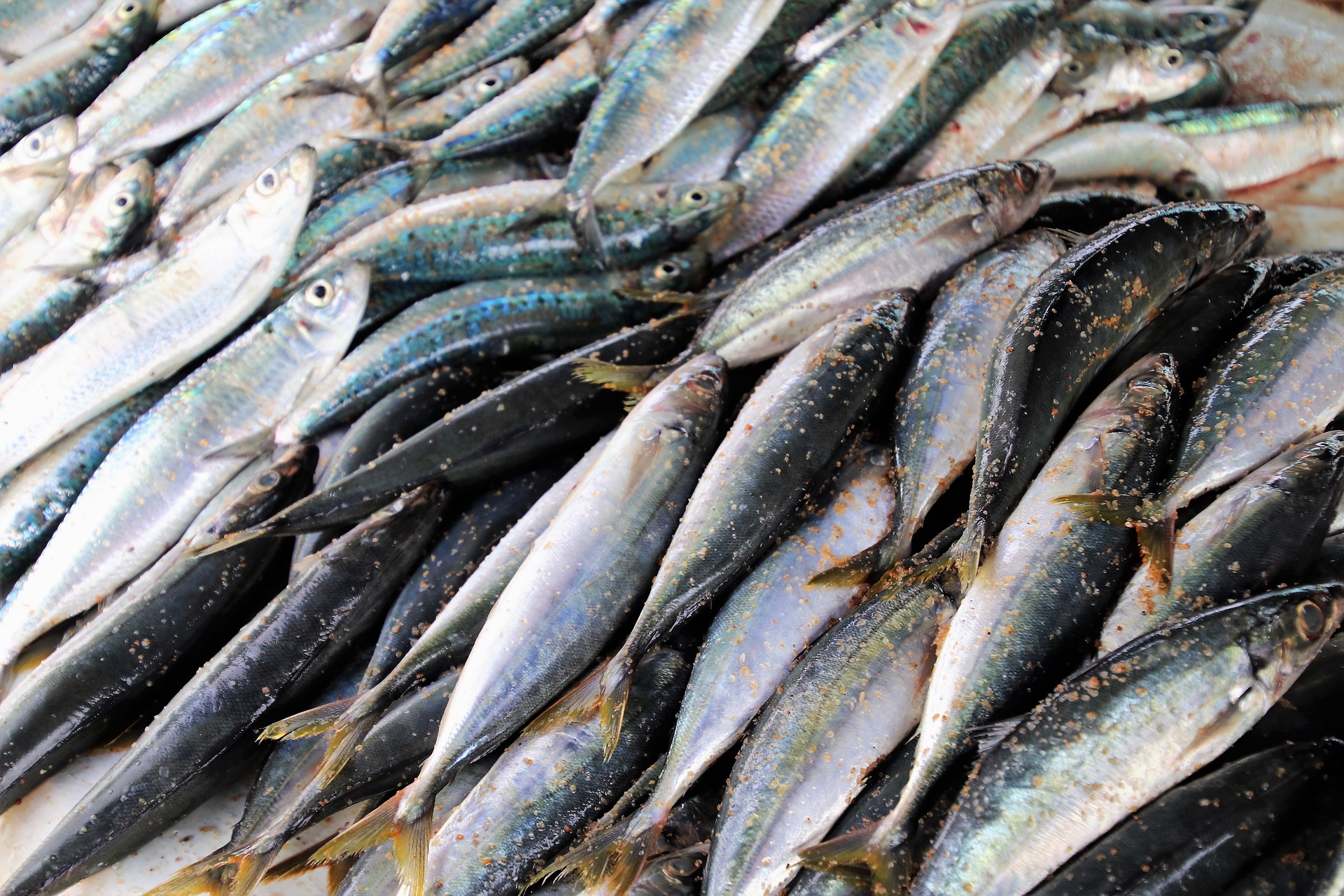 "Per capita consumption of fish and seafood in Croatia is estimated at 8 kg. Total consumption of fish and fish products per capita is significantly lower than in other Mediterranean countries. Fish is consumed mostly at home, traditionally once a week (on Friday) and during some holidays. The consumption of fish is higher in coastal areas than inland. Most fish is sold at traditional fish markets where the availability and freshness of fish products is considered very good. Only 3% of Croatia’s population eat fish every day, with the average person spending just 840 kuna (110 euros) a year on fish. In Croatia the most popular fish eaten are the cheaper varieties such as sardines and anchovies, followed by hake, mackerel and bonito. Croatia exports a big part of its quality fresh fish from the Adriatic, such as scampi and red mullet, whilst restaurants along the coast will often serve farmed fish or cheaper imported varieties." December 2016 Flanders investment and trade market survey of the Croatian Fishing sector, undertaken by the Trade Office of the Embassy of Belgium
"Per capita consumption of fish and seafood in Croatia is estimated at 8 kg. Total consumption of fish and fish products per capita is significantly lower than in other Mediterranean countries. Fish is consumed mostly at home, traditionally once a week (on Friday) and during some holidays. The consumption of fish is higher in coastal areas than inland. Most fish is sold at traditional fish markets where the availability and freshness of fish products is considered very good. Only 3% of Croatia’s population eat fish every day, with the average person spending just 840 kuna (110 euros) a year on fish. In Croatia the most popular fish eaten are the cheaper varieties such as sardines and anchovies, followed by hake, mackerel and bonito. Croatia exports a big part of its quality fresh fish from the Adriatic, such as scampi and red mullet, whilst restaurants along the coast will often serve farmed fish or cheaper imported varieties." December 2016 Flanders investment and trade market survey of the Croatian Fishing sector, undertaken by the Trade Office of the Embassy of Belgium
The problems of the diet created by Croatia's food habits have been observed for quite some time. And, according to the 2020 Global Nutrition Report, they are not getting better. Another report, one on childhood obesity published in just 2018 by the Croatian Institute of Public Health, stated that “every third child, i.e. 34.9% is overweight or obese. There are more overweight (21.5%) than obese (17.2%) boys. 67.3% of girls have a normal body mass index, 20.3% are overweight and 10.7% obese.” These figures are not improving, despite physical education being mandatory in Croatian schools.
“Everyone that comes to see me, everyone that seeks the help of a nutritionist, they all have high cholesterol levels, history of heart disease or they are obese,” says Iva. “The last one is becoming more of a problem. One third of children in Croatia are now obese. It's really quite pronounced. If you look at the statistics, obesity has actually been decreasing over recent years in developed countries. But, in Croatia, it is increasing.”
“Here, you can see the difference clearly between the UK and Croatia. In the UK, obesity was recognised as an issue and you can see the response throughout society. In the UK, you have taxes on sugary drinks. We don't have that here. The price of fruit and vegetables in the UK has actually been decreasing in recent years compared to average income. Here, it has only increased. At the supermarket checkout in the UK, it is now forbidden to have those tempting large racks advertising chocolates. From this year, that marketing is banned there, in the same way that advertising tobacco products is banned. Everything from the politics and the law to the school system is engaged in addressing the issue. We are not so much a developed country like the UK, so there is little promotion of physical activity here and no wider engagement of the issue. In the UK you even see signs suggesting “Why not takes the stairs instead of the elevator?” There's an effort to make everyone in society conscious of the issue.”
For a country famous for its international sports stars and the beach bodies that visitors see on the coast every summer, who would have thought that beneath the surface, Croatia's food and exercise habits were creating such a problem for the population? However, while a lack of exercise can be attributed to poor education and motivation, it is clear that economics has a significant impact on Croatia's food intake. In many cases, the poorer you are, the poorer you eat.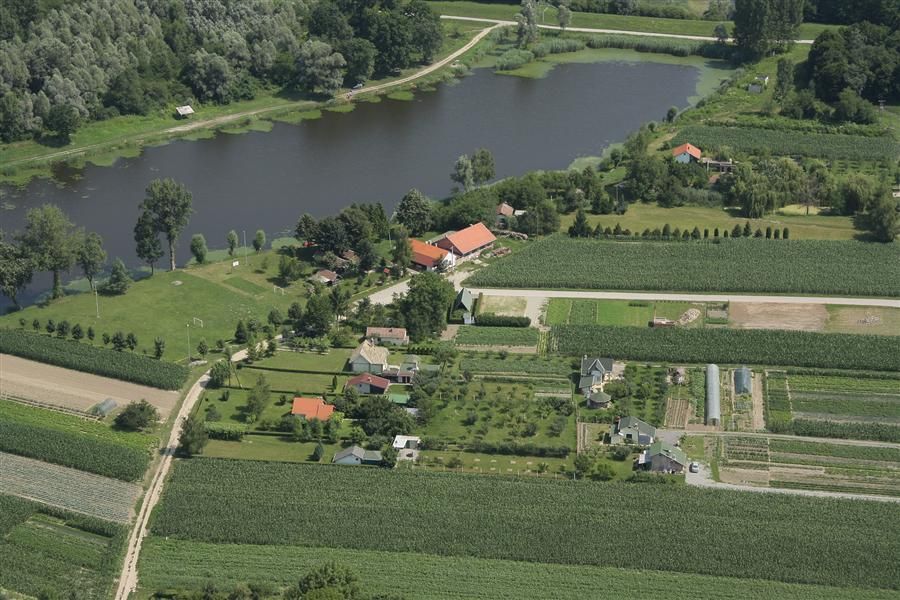 While eastern Croatia contains some of the country's economically weakest areas, many residents of Slavonia have land beside their houses where they grow vegetables, fruits and nuts. Despite this, they are still over-reliant on pork meat © Croatian National Tourist Board
While eastern Croatia contains some of the country's economically weakest areas, many residents of Slavonia have land beside their houses where they grow vegetables, fruits and nuts. Despite this, they are still over-reliant on pork meat © Croatian National Tourist Board
“In the more rural parts of our country, they eat much more seasonal fruits and vegetables,” says Iva. “They eat more vegetables in general – they grow it themselves and eat what they grow. Although, in many rural areas, there is still an over-reliance on meat. Especially the cheapest meat – pork.”
A 2008 study called Regional Differences in Dietary Habits of Adult Croatian Population conducted by researchers at the Andrija Stampar School of Public Health, School of Medicine, University of Zagreb concluded that the people in the poorest areas of Croatia had the poorest diets. Those regions were central Croatia and eastern Croatia (Slavonia). Croatia's food. A map showing the unhealthiest Croatian diets by region, produced for a study undertaken by researchers from the Andrija Stampar School of Public Health, School of Medicine, University of Zagreb. People who live in the poorest regions - central and eastern Croatia - have the least healthy diets. The diet of those who live in Zagreb, which has the country's highest wages, is very good
Croatia's food. A map showing the unhealthiest Croatian diets by region, produced for a study undertaken by researchers from the Andrija Stampar School of Public Health, School of Medicine, University of Zagreb. People who live in the poorest regions - central and eastern Croatia - have the least healthy diets. The diet of those who live in Zagreb, which has the country's highest wages, is very good
In these regions of higher unemployment and lower opportunities, people relied more heavily on a diet of red meat, preserved meats and smoked meats than anywhere else in the country. They also used more butter, pork lard and other kinds of animal fat in food preparation and more salt. While tradition and geographical location do play a part in forming these menus, it is incredibly naive to think that economics is not the key factor – there are river fish available all over Slavonia. This is not simply a question of a healthy Mediterranean diet in comparison to an unhealthy continental one – the City of Zagreb was shown in the study to consume an incredibly healthy diet of Croatia's food. The reason? It may be continental, but it has the highest wages in the country.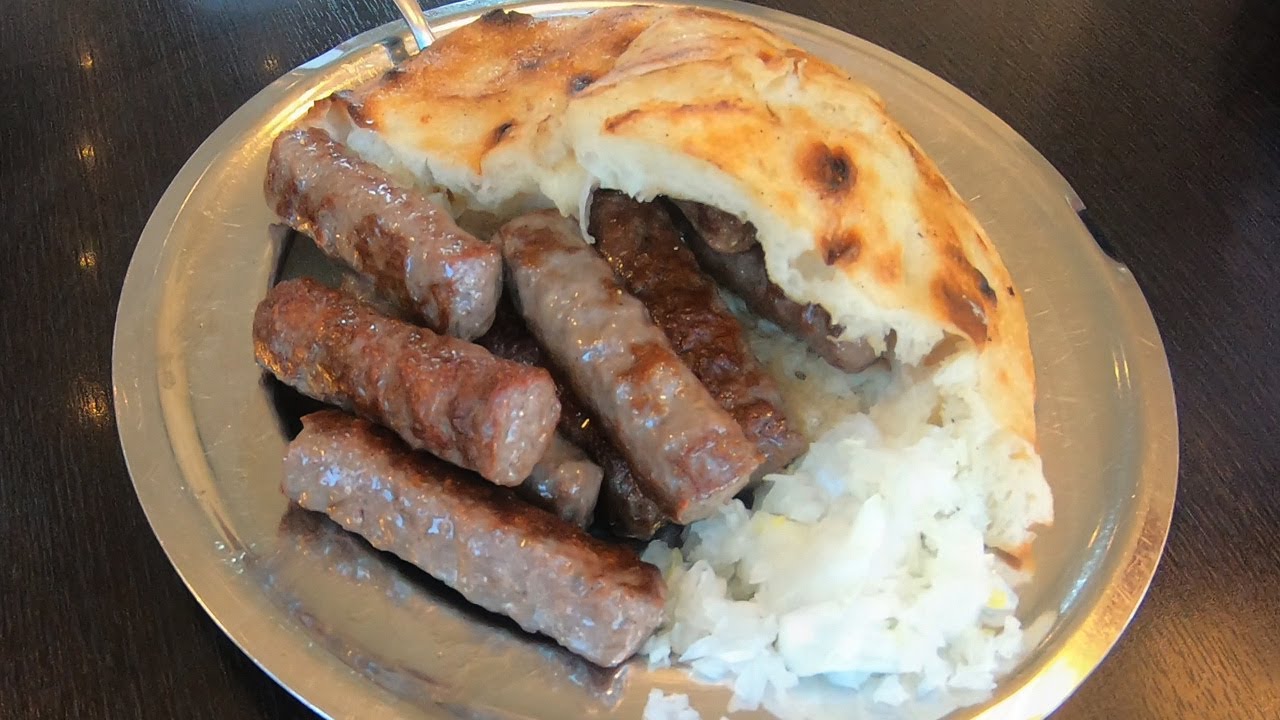 The Croatian diet is heavily reliant on unhealthy pork meat. Unless you go to a specialist or high-quality outlet, you will find cheap pork meat in almost every mixed/minced meat dish - in cevapi, in lasagne, in bakery snacks, in beefburgers and cheeseburgers (yes, really, they put pork their burgers - sometimes you can even find cheap chicken meat mixed into Croatian burgers. True story) and even in the mixed kebab meat. They preserve pork as the highly prized prsut/prosciutto, in sausages like kobasica and kulen, eat the pig's blood in a sausage called krvavica and fry the pig rind to make a crunchy but hardly healthy snack called cvarci. Croatia also has the best bacon in the world.
The Croatian diet is heavily reliant on unhealthy pork meat. Unless you go to a specialist or high-quality outlet, you will find cheap pork meat in almost every mixed/minced meat dish - in cevapi, in lasagne, in bakery snacks, in beefburgers and cheeseburgers (yes, really, they put pork their burgers - sometimes you can even find cheap chicken meat mixed into Croatian burgers. True story) and even in the mixed kebab meat. They preserve pork as the highly prized prsut/prosciutto, in sausages like kobasica and kulen, eat the pig's blood in a sausage called krvavica and fry the pig rind to make a crunchy but hardly healthy snack called cvarci. Croatia also has the best bacon in the world.
“Sometimes the most difficult obstacle to good health facing those here who really need to change their diet is the cost of Croatia's food,” agrees Iva. “It's easy to say “you must eat more fish, fruit and vegetables”, but it's not always easy to do. Many people simply can't afford it. So, what I try to do in those cases is to look for the cheapest foods available which are still the right options. For example, sardines here are really not so expensive. They are high in Vitamin D and Omega 3, which is very important for cardiovascular health. I also recommend eggs, which are high in Omega 3 fatty acids and Vitamin D. I recommend changing to milk and cheese which have a lower fat content. You can find good food which is not that expensive. You might have to search, but you can find it. I recommend people to go and see what is in the discount section. There are lots of us looking to address these problems. On the Instagram page of different.hr each week they advertise what foods are on discount in every Croatian supermarket. That's a really useful resource. It's also great to grow something of your own. You don't need a huge Slavonian back garden to do it – you can even grow some things just on your balcony.”
Croatia Agriculture Production Grows by 1 Billion Kuna in 2020
January 7, 2021 – Within the last month, TCN was pleased to report that Croatia agriculture and food exports had jumped considerably in 2020, while imports of the same had fallen. The success of Croatia agriculture in 2020 has been confirmed by a new report which shows that the industry has grown by almost one billion kuna in a year
The success of the Croatia agriculture sector in 2020 was detailed in a report by Smarter, a consulting company specialising in the agriculture and food industry. Vecernji List published their coverage of the report in recent days.
In the report, figures show that the value of Croatia agriculture production increased by 4.7% compared to the same period during the previous year. Croatia agriculture revenue, therefore, jumped from 17.9 billion HRK to 18.8 billion, an increase of almost one billion kuna. The 12 month period of Croatia agriculture used to compile the figures ends in November within each comparative year.
Figures show that Croatia agriculture experienced excellent results in crop production (wheat, soybeans, corn, etc). This contributing evidence goes some way to explain the good news TCN reported back in December that, according to the country's Central Bureau of Statistics, the total value of Croatia agriculture and food exports in the period from January to September 2020 amounted to 1.7 billion Euros, an increase of 5 percent from the same period in 2019. Within the same period, the value of agricultural and food imports into Croatia was 2.5 billion Euros, a decline of 7.3 percent from last year.
The result of the 2020 successes in Croatia agriculture has been a reduction in the foreign trade deficit by 26.6% in the agriculture and food sector. The improvement in 2020 is being partly attributed to grants and payments under the Rural Development Program (RDP), which have grown significantly creating a stimulus that in part affected the growth of the value of production and the amount that was produced. Increasing profits within the country's agriculture sector is being catalysed by adding value to the raw product which is grown here, via processing and other methods, which happens prior to export taking place.
Strongest Croatian Brands Survived and Succeeded After Independence
January 4, 2020 – A map showing production across the former Yugoslavia details the sustained prosperity of many Croatian favourites as some of the strongest Croatian brands are shown not only to have survived but have succeeded following independence
Media across Croatia, Bosnia and Serbia have surprised younger readers and reminded older readers with the publication of a map detailing production in the former Yugoslavia. While this trip down memory lane has caused a range of reactions across the countries of the former republic, looking at the map from a purely Croatian perspective gives some enlightening information. Namely, many of the strongest Croatian brands visible on the map are recognisable today. Some of the strongest Croatian brands not only survived independence but have since grown.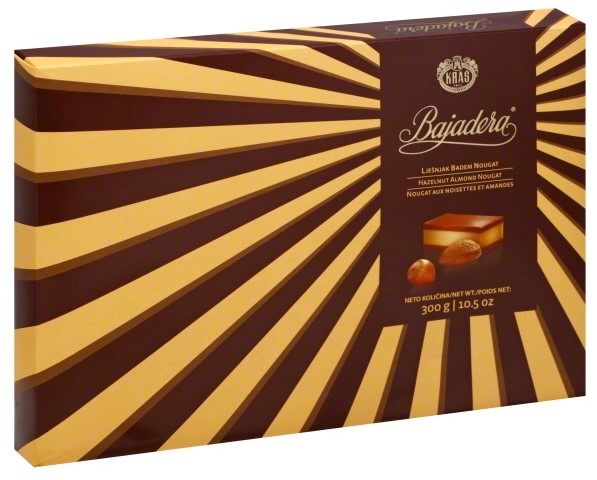
Bajadera - one of the most popular products made by Zagreb-based chocolate and confectionery manufacturers Kraš
Zagreb-based chocolate and confectionery manufacturers Kraš, Požega-based confectionery and drinks manufacturers Zvečevo, oil company INA, Koprivnica-based food company Podravka and Koprivnica-based pharmaceuticals company Belupo, vitamin drink Cedevita, Varaždin-based food company Vindija, Vukovar shoemakers Borovo, Varaždin clothes designers and manufacturers Varteks and multi-use condiment Vegeta are just some of the strongest Croatian brands that are present on the map. You are still likely to see these brand names on many Croatian high streets. Some have succeeded in reaching further into international markets since Croatian independence.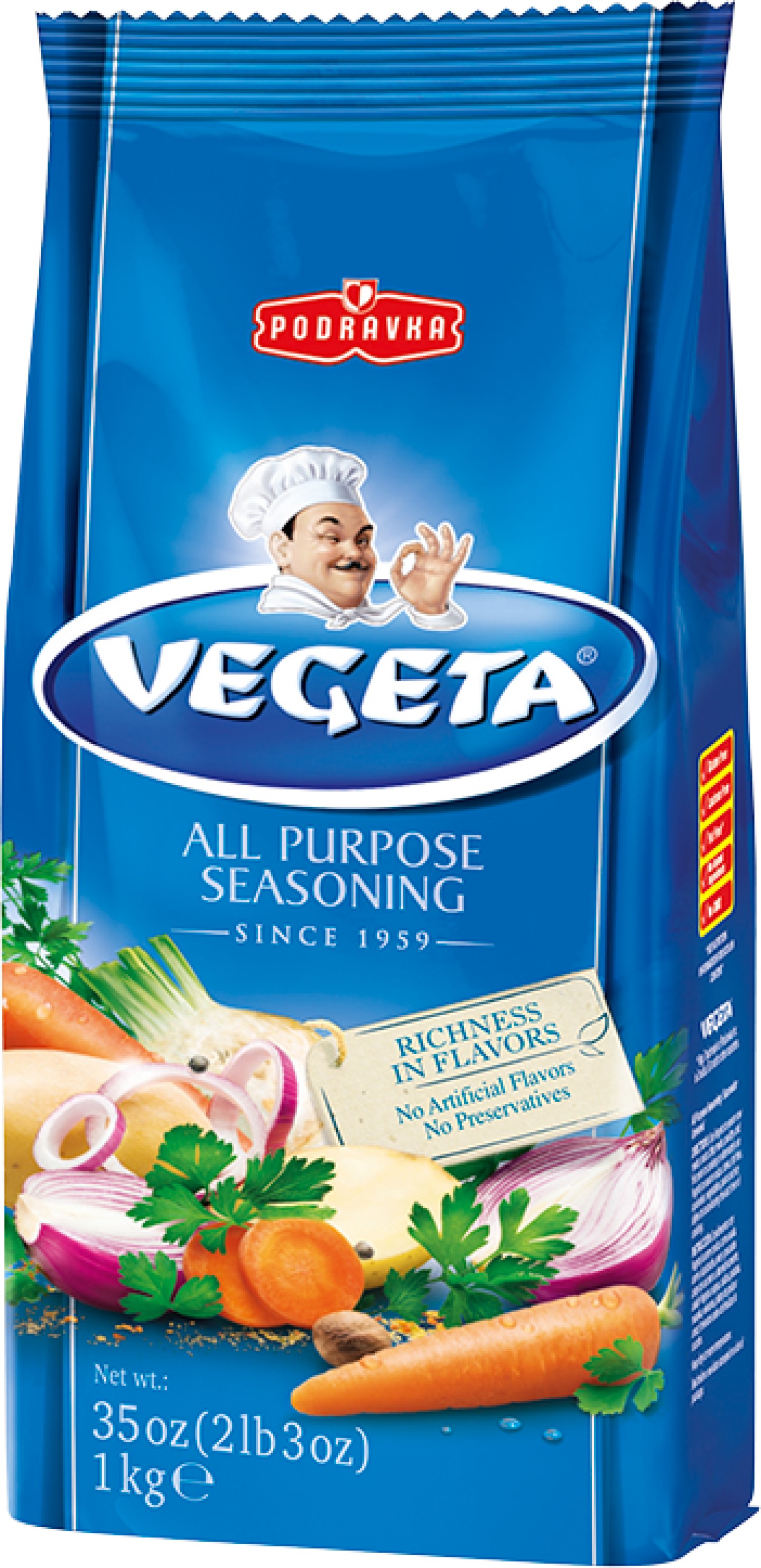 Croatian-made condiment Vegeta is sold all over the world
Croatian-made condiment Vegeta is sold all over the world
Of course, not every brand visible on the map of Yugoslavia production has fared so well. In their coverage of the map, Ri.portal reminds that “Some of the Yugoslav products were used by literally the whole world - ships, cars, planes, trucks, weapons and even computers were produced... However, many of these companies no longer exist or are bankrupt.”
In their coverage of the map, Bosnian website Klix reminds that Croatian shipyards Uljanik in Pula and 3 Maj in Rijeka were at world level and produced large ships for customers from all over the world. Split-based shipyard Brodosplit, which can also be seen on the map, survives to this day.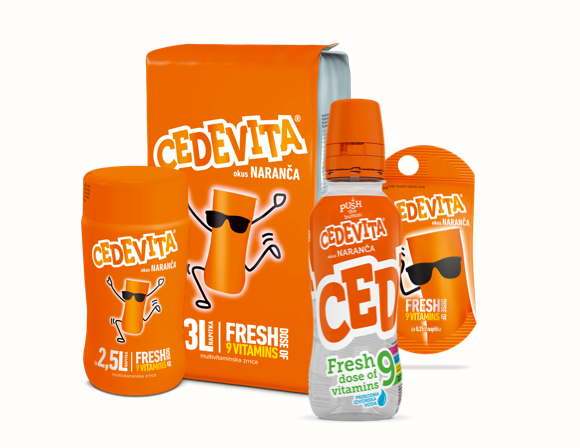
Croatian vitamin drink Cedevita comes in a range of flavours
Ri.portal goes on to remember that Yugoslavia was one of only five countries in Europe at the time that manufactured its own computers. “Probably the most famous is the Galaxy, while the first computer produced was the CER-10,” they say. One of the Yugoslav computer makers on the map, popular in the late 1970s, was Digitron, based in Buje in Istria.
Sadly, not all of the strongest Croatian brands have made it until today. Famous tractor and agriculture equipment manufacturer Tomo Vinković of Bjelovar is no longer in production. Their famously-reliable machines are much in-demand on the secondhand market. Two new tractor manufacturers, Hittner doo and the Prima tractor factory still make tractors in Bjelovar.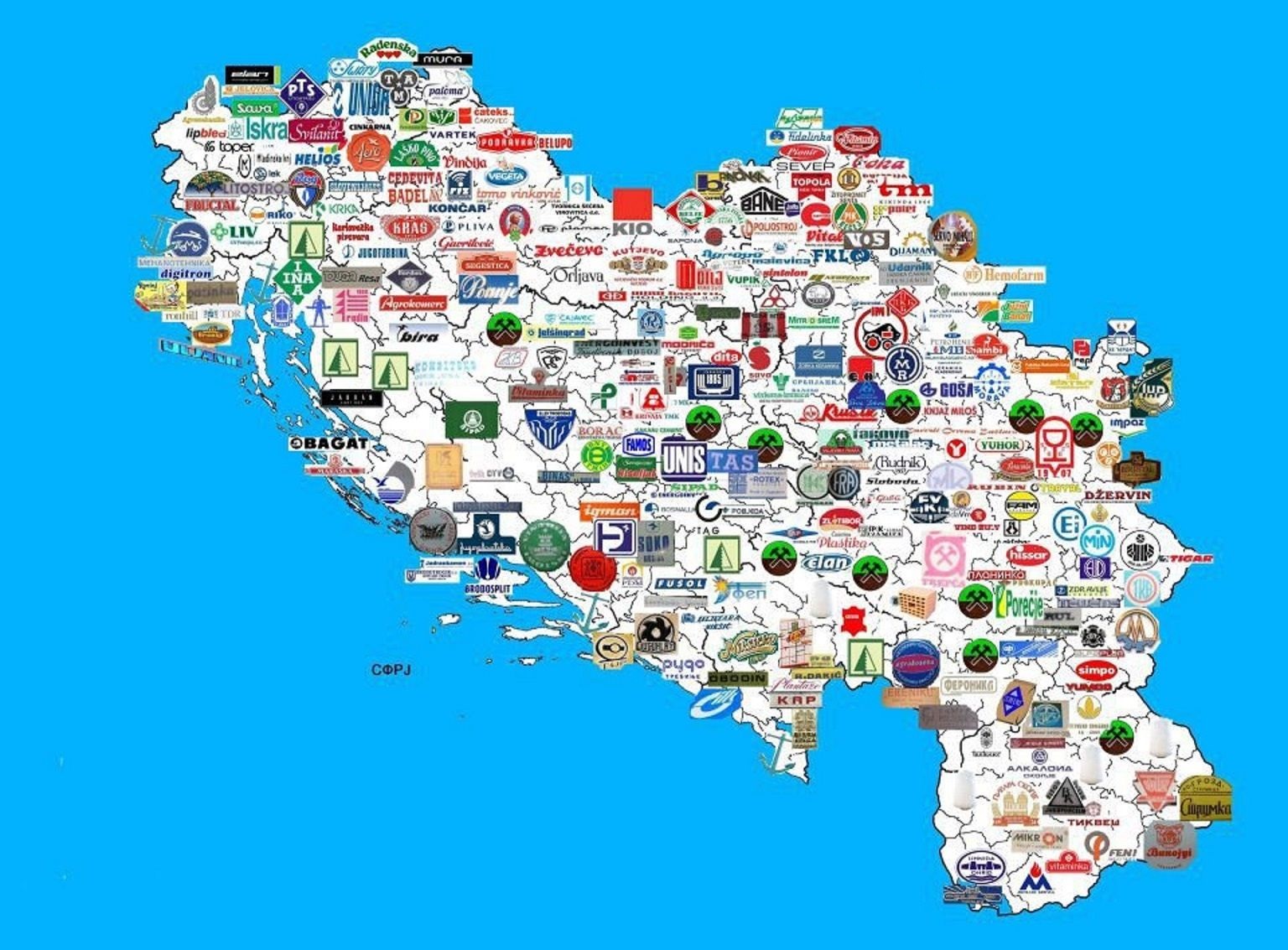
Croatia Agriculture and Food Exports Jump in 2020, Imports Fall
December 19, 2020 – A surprising success story in a difficult year as Croatia agriculture and food exports jump in 2020, while imports of the same have fallen
Good news from any place is welcome in this most difficult of years. According to provisional data from the country's Central Bureau of Statistics, the total value of Croatia agriculture and food exports in the period from January to September 2020 amounted to 1.7 billion Euros, an increase of 5 percent from the same period in 2019. Within the same period, the value of agricultural and food imports into Croatia was 2.5 billion Euros, a decline of 7.3 percent from last year.
The success of Croatia agriculture and food exports in the period means that the country's trade deficit has decreased by huge 26.6 percent compared to the same period last year. With this year's findings taken into account, the trade deficit now stands at 758.8 million Euros.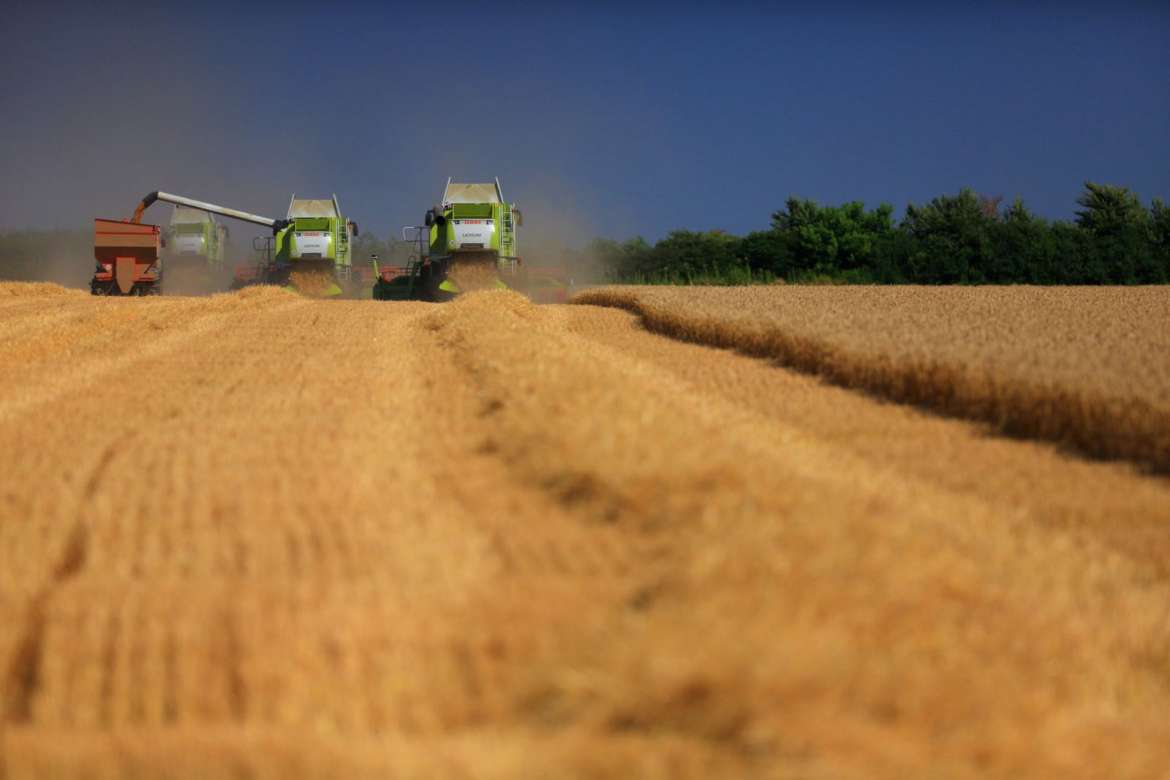 © Romulić & Stojčić
© Romulić & Stojčić
Croatia agriculture and food exports covered 69 percent of total imports this year, an increase of 8.11 percent. A total of 15.86 percent of all exports from the country come from the Croatia agriculture and food exports sector.
The most important item of production within the sector is corn, which accounts for 5.4 percent of all Croatia agriculture and food exports.
From January to September 2020, the most significant products in exports were: cereals (205.4 million Euros – a growth of a huge 62.6 million Euros); various food products (168.1 million Euros – including manufactured/processed foods like sauces, soups, ice cream, sugar products); fish and other seafood (a huge 147.4 million Euros – showing a growth of 14.5 million Euros); cereals, flour, starch or milk products; confectionery products, including chocolate (135.9 million Euros – a growth of 13.8 million Euros), and tobacco-related products (122.6 million Euros). TCN recently took a closer look at the successful and well-established Croatian chocolate industry
Other successes within 2020 Croatia agriculture and food exports were live animals, with an increase of 10.1 million Euros, and the residue and waste of the food industry, which is exported to go into prepared animal foods. The latter saw an increase of 8.6 million Euros.
So far this year, Italy was one of the most important destinations for Croatia agriculture and food exports. Their total consumption of Croatia agriculture and food exports was 300.8 million Euros, which amounts to 17.76 percent of Croatia's exports in the sector. Croatia agriculture and food exports to Italy increased by 21.9 percent this year, while imports from Italy to Croatia in the same period was 263 million Euros, a decrease of 16.6 percent on 2019. This creates a surplus of 37.6 million Euros.
The most important Croatia agriculture and food exports to Italy are maize, wheat and soybeans, tobacco-related products, sea bass (brancin) and bream (orada).
For the last five years, Croatia agriculture and food exports top consumer has been Germany. For the past seven years, Germany has also been the country from which Croatia has imported the most.
First Croatian Avocado Plantation Planted on Island of Vis!
As Morski writes on the 2nd of May, 2019, the very first Croatian avocado plantation has been planted on the Dalmatian island of Vis. The pear-shaped fruit can typically be found growing in Central and South America, it's very rich in vitamins, minerals and other nutrients essential for the health of the organism.
It seems that the warm Mediterranean climate bodes well for the growth of avocados because those growing are advancing well and generally give generous yields. To make the story of the very first Croatian avocado plantation even more unusual, it was kickstarted by two Americans from Wisconsin, the Repanich couple, who, despite their advanced years, have some great business plans under their belts. Perhaps because they eat avocados each and every day.
John and Patricia Repanich, a lively couple in their eighties, replaced life in America with the birthplace of John's grandfather. Back when they lived in the US, they had nut plantations in California, as well as flocks of sheep, and when retirement age came around, out of all of the places in the world, they chose no less than the beautiful island of Vis as their new home, as was reported by HRT. For years and years before that, they'd already spent plenty of time enjoying Vis's stunning Brgujac bay.
''Once a farmer, always a farmer,'' says John. Pensions aren't for rest, it's best to keep your hands busy. Their avocado experiment was fruitful. Ten years ago, they planted their first tree.
When that very first plant ended up ''giving birth'' to hundreds of the avocados, the entrepreneurial American spirit was awakened in Repanich. From Sicily, the couple brought 150 plants to the Croatian island of Vis and started the very first avocado plantation in the whole of Croatia, the first fruit of which is due this autumn.
Avocados otherwise originate from the South and North American rainforests, where, at least according to numerous archaeological discoveries, they were eaten 8,000 years ago. The first avocados were utilised by the Inkas, the Olmecs and Maya peoples, who considered it a magical plant that nourishes the body from the outside and from the inside. It is very rich in good fats, vitamins, minerals, and other nutrients essential to the health of the body.
Among other things, it benefits the heart, reduces blood sugar, helps with arthritis, and even helps people to lose weight. Experts think it is the top food for brain health because of its high share of omega-3 acids and vitamin E.
Avocados are diverse and can be eaten raw or be thermally processed in many ways, and perhaps the most famous avocado dish of all is Mexican guacamole. Thanks to Repanich's, the first Croatian avocados have become an attraction, so more and more people have been coming to Brgujac to see the premier Croatian plantation for themselves. Along with its olive oil and its wine, the island of Vis could easily also become a Croatian island known for its tropical fruits.
Make sure to stay up to date by following our dedicated lifestyle page for much more.


